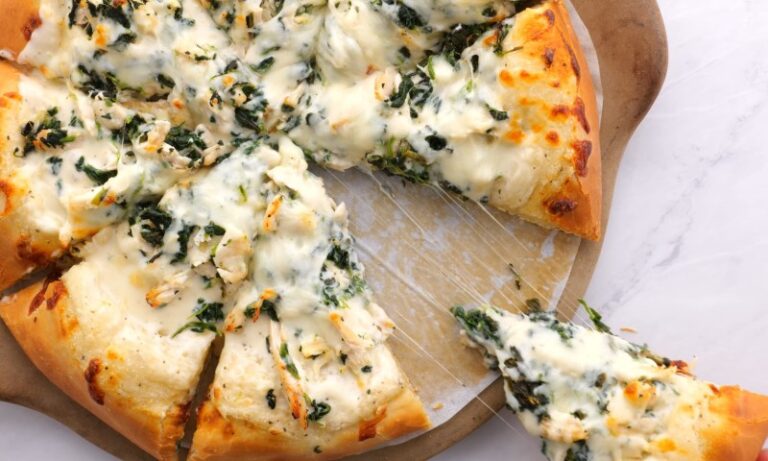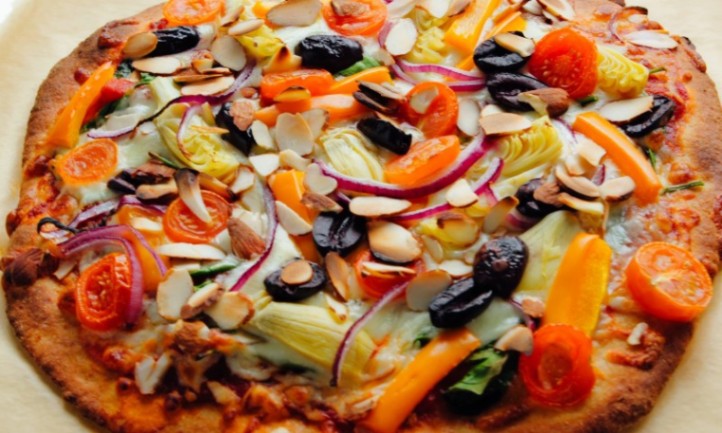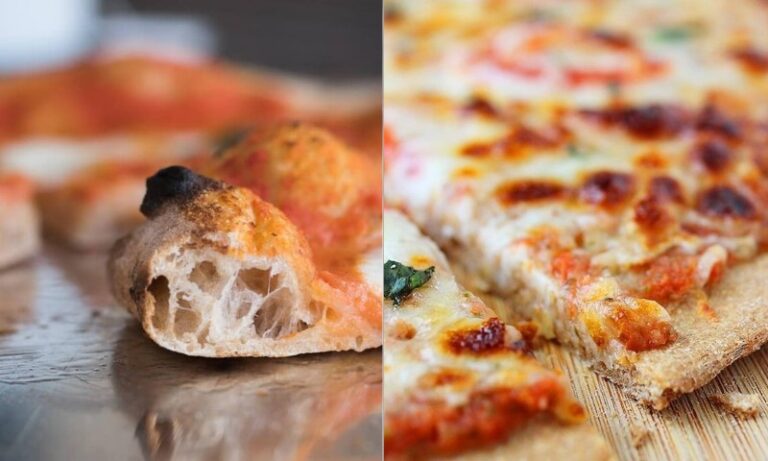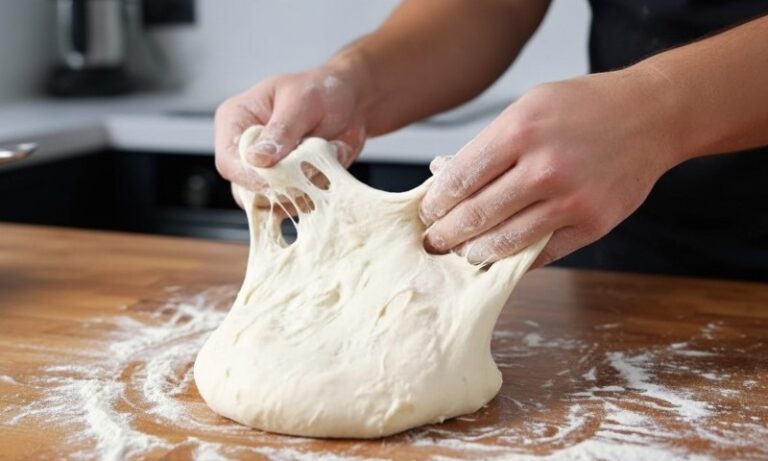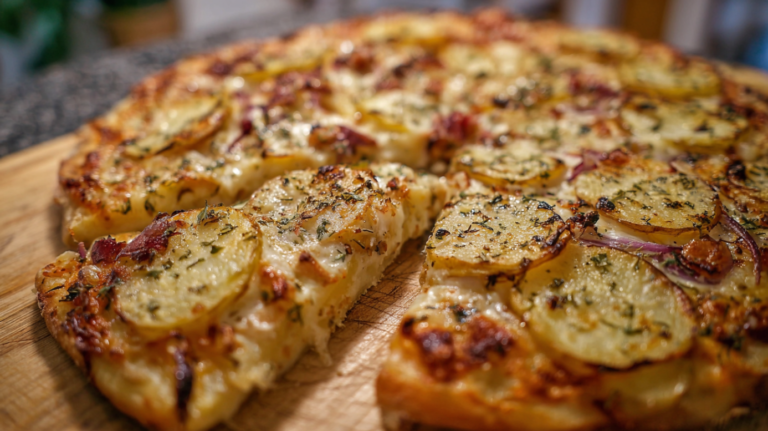Pizza is sacred in Italian culture, a symbol of tradition carried proudly through generations.
Italians cherish the classics: Margherita with fresh basil, San Marzano tomatoes, and mozzarella; prosciutto layered delicately; or a drizzle of olive oil over simple dough.
Any deviation from this formula risks being labeled culinary heresy.
Yet health-conscious eaters around the world continue to test the boundaries by layering pizzas with toppings that prioritize nutrition over tradition.
The result is a plate full of vitamins, protein, and antioxidants, but also a guaranteed side effect, an outraged Nonna.
Table of Contents
Toggle1. Cauliflower Crust with Hummus Base
Cauliflower crust has become a modern health favorite, praised for being gluten-free and low in carbohydrates.
It provides fiber that keeps digestion regular while reducing the heaviness often associated with traditional dough.
For those following keto or gluten-free lifestyles, it represents a way to enjoy pizza without straying from dietary goals.
Replacing tomato sauce with hummus adds another layer of nutritional advantage. Hummus is made from chickpeas, tahini, olive oil, and lemon juice, offering protein, healthy fats, and creamy texture without the use of dairy.
That makes each bite satisfying while supporting muscle repair and satiety.
Health enthusiasts often point to this version as a guilt-free indulgence that allows them to stay committed to their wellness routines.
Nutritional benefits at a glance:
- Gluten-free, low-carb alternative to wheat dough
- High in fiber, aiding digestion
- Protein-rich base thanks to chickpeas
- Dairy-free creaminess without added saturated fats
- Suitable for keto and vegan diets
Italian purists, however, see this combination as an abomination. In their tradition, pizza begins with dough made from flour, yeast, water, and salt.
Remove that, and to them, you have erased the very foundation of what defines pizza.
Hummus in place of tomato sauce is an even greater crime, stripping away the sacred connection to San Marzano tomatoes and fresh olive oil.
To traditionalists, such a dish is not merely a creative adaptation but something that cannot be called pizza at all.
2. Butternut Squash & Kale Combo

Butternut squash roasted to caramelized sweetness pairs perfectly with hearty kale. Both ingredients pack antioxidants, vitamins, and fiber, making the pizza nourishing and seasonal.
For many, it feels like enjoying autumn on a slice, a healthier alternative to heavy meat toppings.
To Italians, however, pumpkin belongs in risotto or soup, not scattered across pizza dough. Kale fares no better, as it carries associations with modern health fads rather than centuries of culinary practice.
Nonna might tolerate a sprinkle of basil, but seeing kale dominate her beloved pizza is grounds for passionate objections.
3. Grilled Pineapple & Pickled Jalapeños
Sweet pineapple slices bring bursts of vitamin C, while jalapeños introduce metabolism-boosting spice.
Together, they form a sharp contrast that excites adventurous eaters looking for both nutrition and bold flavors.
The blend of sweet fruit and tangy heat makes for a topping that satisfies cravings while supporting wellness goals.
Why some love it:
- Pineapple provides antioxidants and hydration
- Jalapeños contribute vitamin C and capsaicin for metabolism
- Balances sweet and spicy for flavor variety
- Adds vibrancy without heavy fats
For Italian purists, pineapple alone is already controversial. Adding pickled jalapeños elevates the offense to new heights.
To them, fruit and brined heat do not belong anywhere near wood-fired dough.
In their eyes, this version resembles a prank more than pizza, an insult that sparks outrage rather than appetite.
4. Tofu Crumbles or Jackfruit “Sausage”
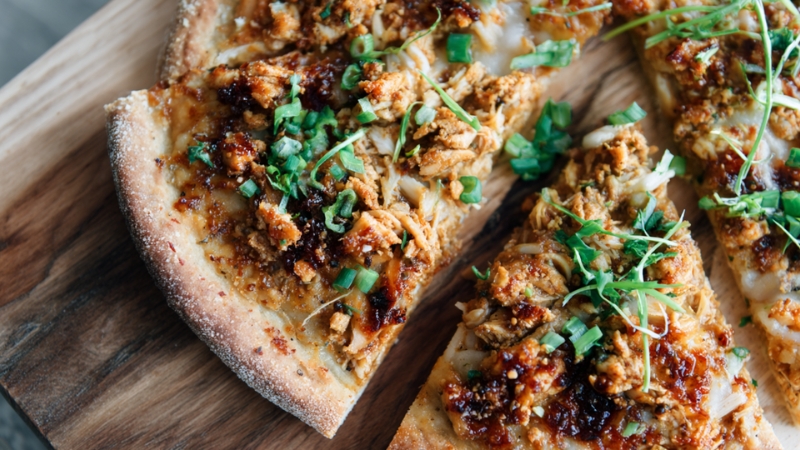
Plant-based eaters celebrate tofu crumbles and jackfruit for their ability to mimic the heartiness of sausage without the fat.
Both options are nutrient-dense and deliver protein in a way that satisfies vegans and those searching for lighter meals.
Sprinkle chia seeds on top, and the health factor rises even further, adding omega-3s and extra fiber.
Nutritional highlights:
- Tofu provides lean plant protein
- Jackfruit mimics a meaty texture with minimal fat
- Both options suit vegan and vegetarian diets
- Chia seeds provide benefits such as omega-3s and fiber
Italian Nonna, however, is not easily deceived. For her, sausage is made with pork or beef, seasoned traditionally with fennel and garlic.
Offering jackfruit as a substitute feels like a betrayal of everything sacred.
Expect exasperated sighs and muttered phrases about culinary dishonesty.
5. Avocado & Black Bean Fiesta Pizza
@erekasfood Pizza goals!! #avocado #recipe #avocadotoast #healthyrecipe #favoriterecipe #cooking #food #homechef #learnontiktok #foodie #fyp #pizza #vegetarian ♬ MI MUNDO – Nomad & Lola
Creamy avocado slices blend with hearty black beans to create a topping rich in fiber and healthy fats.
Together, they provide energy, satiety, and essential nutrients.
It feels like a playful take on Mexican-inspired flavors layered over dough, delivering both nourishment and satisfaction.
Why it’s considered healthy:
- Avocado provides monounsaturated fats for heart health
- Black beans contribute protein and fiber
- Nutrient-dense option compared to processed meats
- Supports energy and fullness without excess calories
For Italian traditionalists, this combination crosses the line. In their view, avocado belongs in a salad or guacamole, while black beans stay wrapped inside tortillas.
Seeing them arranged on pizza dough clashes with cultural devotion to mozzarella, tomato, and basil.
A single glance from Nonna might be enough to shame you into scraping the toppings off.
6. Pear, Gorgonzola & Walnut

A trio of pear, gorgonzola, and walnut transforms pizza into something resembling gourmet dining.
Sweet fruit contrasts with pungent cheese, while crunchy walnuts deliver omega-3s and texture.
Many health-focused food lovers view this as a refined upgrade to traditional flavors.
Benefits worth noting:
- Pear offers fiber and natural sweetness
- Gorgonzola contributes calcium and protein
- Walnuts provide omega-3 fatty acids and antioxidants
- Combines indulgence with nutrition
Italians, however, may react with laughter or disbelief. To them, this combination belongs on a cheese board paired with wine, not baked on dough.
Serving such a pizza risks being labeled culinary heresy, an act of rebellion against centuries of tradition.
7. Beetroot & Goat Cheese with Arugula
Nutrient-dense beetroot and creamy goat cheese topped with peppery arugula deliver a meal that’s as colorful as it is wholesome.
Vitamins, minerals, and detox-friendly qualities make this pizza a favorite among health-focused diners. It resembles something pulled fresh from a farmers’ market.
Traditional Italians might not recognize it as pizza at all. Beetroot carries earthy notes unfamiliar to their palate in this context, and goat cheese combined with arugula feels more like a salad misplaced on dough.
While modern pizzerias may experiment, old-school Italians prefer to leave farmers’ market baskets off their pizza stones.
8. Thai-Inspired Cashew & Carrot Pizza
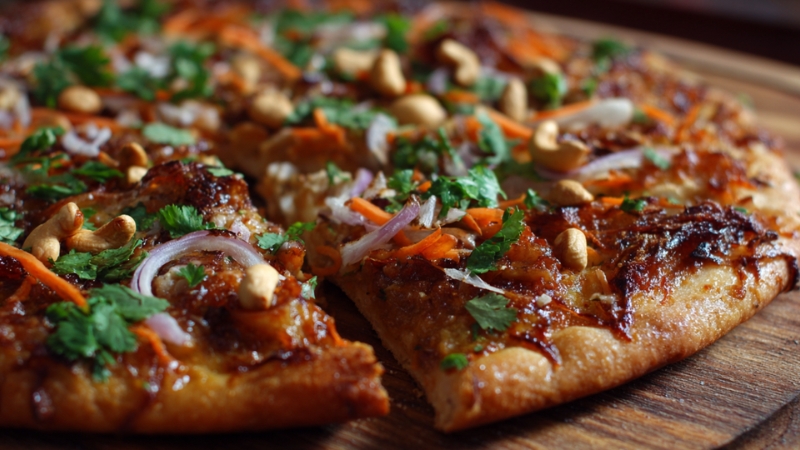
Cashews bring protein and healthy fats, while carrots contribute beta carotene and a touch of sweetness. Together, they create a topping combination that borrows flavors from Southeast Asian cooking.
For health seekers, it’s a refreshing departure from greasy pepperoni or heavy cheese.
To Italian eyes, however, the dish no longer qualifies as pizza. Cashews and carrots scream pad Thai, not Neapolitan tradition.
When served at a table full of Italians, this version would likely trigger a passionate debate about what defines pizza and where to draw the line between creativity and chaos.
9. Sweet Potato with Vegan Cashew Cream
Creamy layers of dairy-free cashew sauce pair with roasted sweet potato slices for a pizza loaded with vitamin A and satisfying textures.
Those seeking plant-based, nutrient-dense meals find comfort in this combination. It manages to be hearty without relying on animal products.
Nonna would argue immediately. To her, mozzarella defines the heart of pizza, and replacing it with nut-based cream removes its soul.
Sweet potatoes baked on top of dough may delight modern eaters, but in Italy, it risks earning the judgmental title of “not pizza.”
10. Pomegranate Seeds & Labneh Swirl

Bright pomegranate seeds burst with antioxidants, while labneh adds probiotics and tangy creaminess.
Together, they provide freshness and nutrition in a way that appeals to those who enjoy experimenting with food.
It feels more like a cross between pizza and dessert, offering a balance between tart and creamy.
Nutritional advantages:
- Pomegranate seeds add antioxidants and vitamin C
- Labneh contributes probiotics for gut health
- Lower in fat compared to heavy cheeses
- Sweet and tangy combination without processed sugar
Traditional Italians may faint at the sight. For them, pomegranate belongs in sweets, and labneh is closer to yogurt than mozzarella.
Put them on dough, and tradition has been flipped upside down. Nonna would likely call it a culinary rebellion unfit for her oven.
The Bottom Line
Healthy toppings may break every rule of Italian culinary tradition, yet they capture the imagination of modern eaters searching for balance and nutrition.
Nonna may never approve of avocado, beets, or pineapple, but adventurous cooks continue pushing the limits of what can sit on a round piece of dough.
Try them for yourself, but perhaps avoid mentioning it at Sunday dinner with Italian in-laws.

